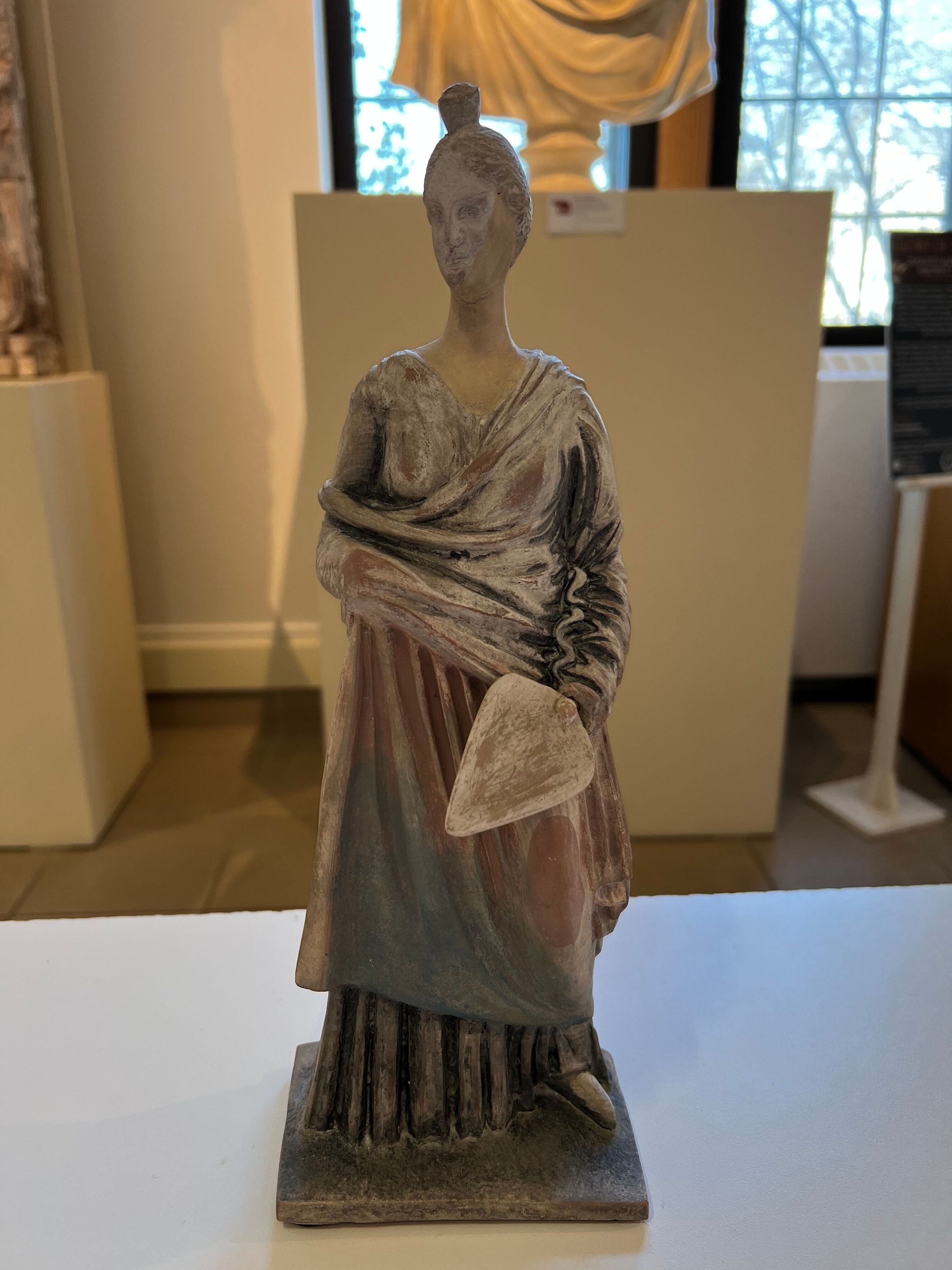Tanagra Figurine with Fan
Name/Title
Tanagra Figurine with FanEntry/Object ID
22G01257Description
Female figure standing wearing a chiton and himation with a small round hat on top of the head. She is holding a heart-shaped fan in left hand. There are remnants of pink and blue paint on the himation, and dark blue paint on bottom part of the chiton. Remnants of flesh-toned paint of the face, neck and chest. Resin copy of terracotta original.Type of Sculpture
StatuetteArtwork Details
Medium
TerracottaSubject
Tanagra FigurineContext
Named after the Tanagra region of Boeotia, Greece where figures like these were discovered in the 19th century, many having been found in the context of graves. Most of the figurines, also referred to as “Tanagras”, depict fashionable women and girls, occasionally figures representing characters from the New Comedy plays of Menander, and on rare occasions young men and boys. These statuettes preserve the styles of dress and accessories worn by women and girls of the Hellenistic period. Bright colours were used to render naturalistic attributes using water-soluble paints. These small figurines approximate the colours that would have been used on larger marble sculptures. Production of the Tanagras began in the last quarter of the 4th century BCE, and production sites have been found all across the Ancient Greek world with some of the earliest examples located in Athens. The figures were made by pressing clay into two separate concave molds, one for the front and one for the back of the body. Any projecting arms and heads were attached separately before being fired in a kiln. This allowed for great variation and customization in the look of the figures. They are believed to have been largely made and used as votive offerings. By the end of the 4th century BCE they ceased to be objects of reverence, and were manufactured simply as representations of women and girls in everyday life. In the case of this figurine, the fan and hat were made separately by hand. Tanagra figurines are often depicted carrying fans or wreaths of flowers as a way of showing how a high-status woman in a public space could maintain elegance while holding her complicated garment and a personal implement. On her himation (cloak) there are traces of blue paint, which was an expensive colour to produce in the ancient world.Collection
Hellenistic GreeceMade/Created
Date made
circa 300 BCE - circa 200 BCETime Period
HellenisticEthnography
Culture/Tribe
Greek - Hellenistic

